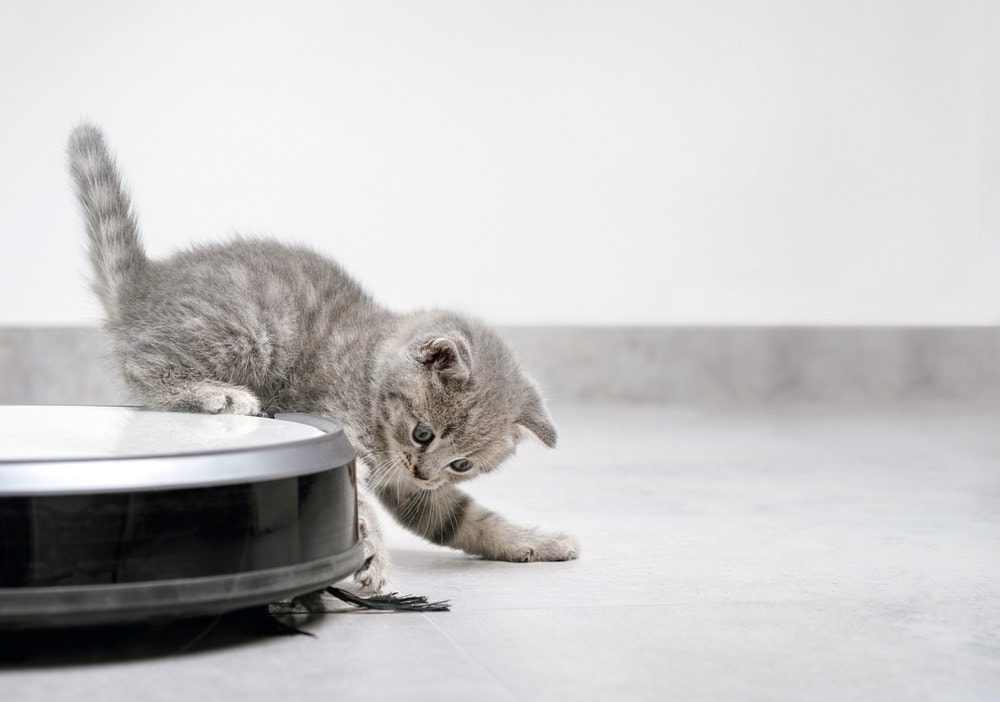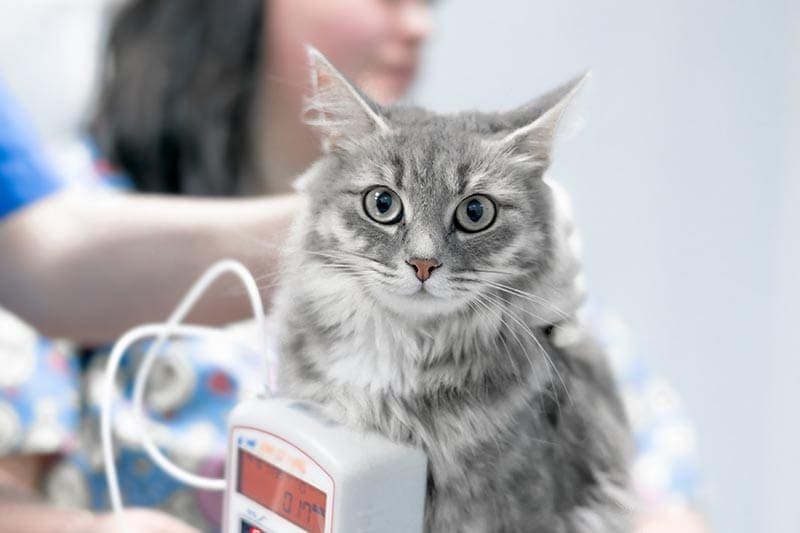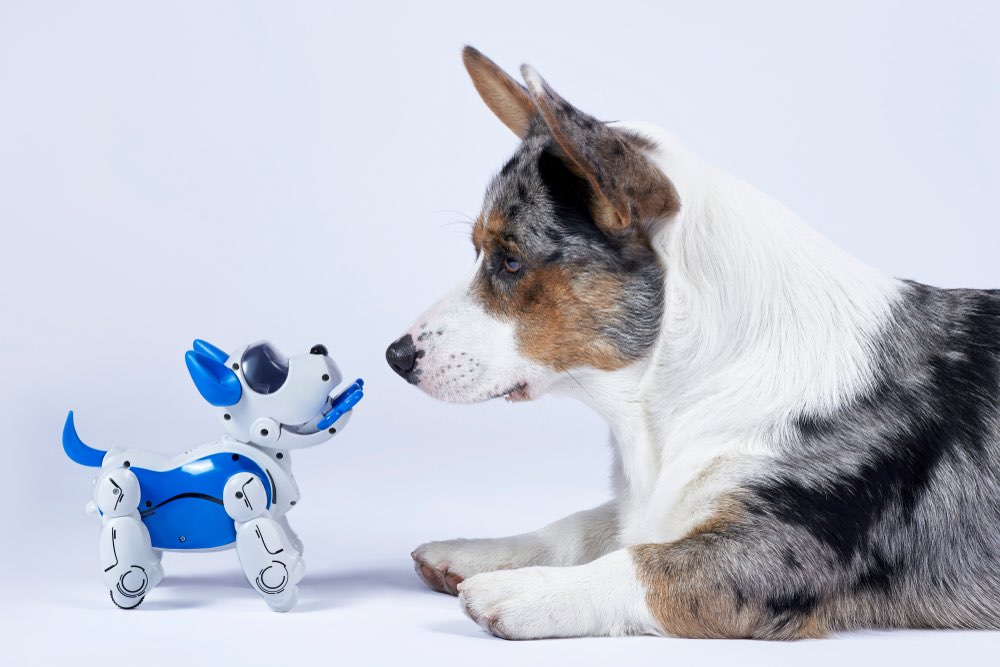How Can Artificial Intelligence Help Dogs, Cats & Other Pets? Interesting Facts

By Misty Layne
Updated on

The future is here, and it involves a whole lot of technology! There’s foodie tech, healthcare tech, and senior tech. There doesn’t seem to be anything that can’t benefit from technology. So, can these ever-growing technological advances offer any benefit to our dogs, cats, and other pets?
Many of the plethora of modern technologies available today work with the help of artificial intelligence and machine learning. And both are proving to benefit our pets—at least in certain areas—no matter the type of animal, breed, or size. How exactly do they provide benefits for household animals, though?
What Is Artificial Intelligence?
When you hear the words “artificial intelligence,” thoughts of living in a dystopian future much like the ones from “The Terminator” or “Robopocalypse” might come to mind. However, artificial intelligence is currently being used every day, from smartphones to smart homes to cars that drive themselves (and, so far, at least, none of this artificial intelligence has tried to take over the world, which is a bonus). What precisely is artificial intelligence, though?
Artificial intelligence may be a sign of the times, but the idea of it began back in 1950, thanks to a paper by Alan Turing in which he asked the question, “Can machines think?” Since the beginning of the conversation that started from Turing’s idea of machines acting similarly to humans, the definition of artificial intelligence has undergone many changes. However, at its core, it refers to a combination of databases and computer science working together to make intelligent machines.
Some examples of modern artificial intelligence include Amazon’s Alexa and Tesla’s self-driving cars.
What Is Machine Learning?
You may be less familiar with the term machine learning, but it is a subfield of artificial intelligence. It is also the part of artificial intelligence that can give one vision of robot overlords. That’s because machine learning uses algorithms and data to imitate how humans learn. This aspect of artificial intelligence is the reason why Netflix can recommend shows you’ll love, and Alexa can speak to you in a conversational way.
How Can Artificial Intelligence and Machine Learning Benefit Dogs, Cats, And Other Pets?
Now that you know what artificial intelligence and machine learning are and how they’re used in our everyday lives, it’s time to learn about how they can benefit our beloved pets.
1. Health
Much like how artificial intelligence and machine learning have become a large part of monitoring and maintaining people’s health, it is a growing part of keeping our pets living longer, healthier lives too. In the past, we would simply keep track of our pet’s health by observing them. But today, we can collect a vast amount of health-related data in other ways – including genetics or how active they are each day – to make determinations. With that information, artificial intelligence and machine learning can locate patterns indicating whether a disease or illness could be imminent.
Some examples of this are pet trackers and cameras. Both of these products keep track of your pet’s daily activities – from when they eat, how much they eat, how active they are, and more. When a tracker or camera notices something unusual in an animal’s daily habits, it can alert you so you’re aware there could be a potential issue.
Artificial intelligence and machine learning can also aid your vet in diagnosing pets, such as by helping diagnose cancer or kidney disease early. Plus, advances are being made with these technologies to allow pet parents access to vets 24/7, so symptoms of illness can be checked straight away if their regular vet isn’t available at the time.
However, artificial intelligence and machine learning in pet healthcare aren’t meant to replace regular vets or the human aspect but merely to supplement.

2. Communication
Another area where these techs can benefit both pets and their owners is in communication. Clearly, our pets can’t speak to us, but with the help of tech, we can learn to communicate better with them.
Artificial intelligence and machine learning might also help us decipher what our pets are thinking, despite the language barrier. With the use of these technologies, apps can look at your pet’s expressions and interpret them.
Or your pet could communicate with you when you’re away from home, and they miss you. One fun example of this is Petcube’s use of artificial intelligence and machine learning in their products that will not only recognize an animal but also allow it to call its parents and even send selfies!
3. Caring for Our Pets
Artificial intelligence and machine learning can also aid us in taking care of our pets via the use of smart technologies. Much like smart light bulbs or other smart home tech are available to us, there are smart techs available for animals.
You can give your dog treats when you aren’t home or go ahead and feed your cats when you’re working late. You can even keep your pets fit when you can’t walk or play with them with the help of a fitness robot.
As this field of smart tech continues to grow, it seems as if the sky’s the limit!
Final Thoughts
Artificial intelligence and machine learning use in our everyday lives will only continue to expand. Luckily, our pets can now get in on the technological action, and these techs look to be a massive aid in keeping our pets leading happy, healthy, long lives. They could even enable us to communicate better with our pets or take care of them when we’re away. With so many advances and more on the way, it looks like the future will be very exciting!
- Related Read: Robot Cats: Are They the Future?
Featured Image Credit: Roman Pyshchyk, Shutterstock














